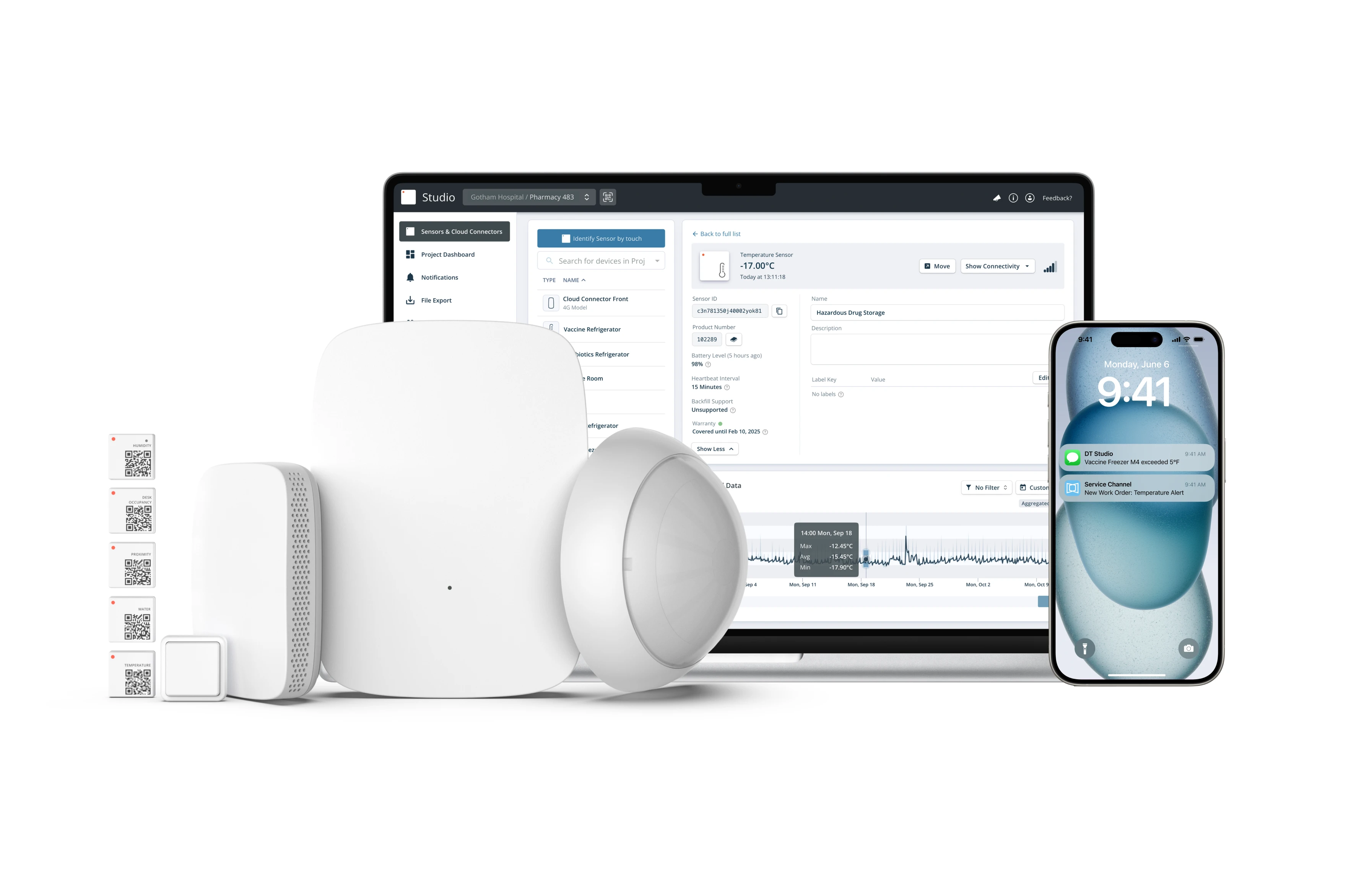Temperature Monitoring: An Extra Layer of Protection for FSMA Traceability Compliance

The Food Safety Modernization Act (FSMA) has reshaped how businesses in the food supply chain manage safety and quality. One of the key sections of FSMA, Section 204, focuses on enhancing food traceability to prevent and respond to food-borne illness outbreaks more efficiently. While this legislation promotes increased transparency throughout the supply chain, an essential yet often overlooked aspect of food safety is temperature monitoring.
Although FSMA’s traceability requirements primarily focus on tracking food through critical events like growing, receiving, transforming, and shipping, temperature monitoring adds an extra layer of protection that can further safeguard perishable goods. In this blog, we’ll explore how temperature monitoring enhances traceability efforts and strengthens your compliance with FSMA regulations.
FSMA Section 204: The Importance of Traceability
FSMA Section 204 is designed to improve the traceability of high-risk foods by requiring businesses to keep detailed records of Key Data Elements (KDEs) at Critical Tracking Events (CTEs) throughout the supply chain. This helps the FDA rapidly trace the source of contaminated food in the event of a foodborne illness outbreak or contamination issue.
The key requirements under FSMA’s traceability rule include:
- Maintain records of lot codes, product descriptions, quantities, and the date and location of critical events such as receiving, shipping, and processing.
- Implement a system that links each stage of the food supply chain, facilitating the rapid identification of contaminated products.
While these KDEs are vital for tracking food from farm to table, there’s one crucial element that is not explicitly required but remains critical for perishable foods: temperature control.
Why Temperature Monitoring Should Be Part of Your Traceability Strategy
For many perishable products like dairy, seafood, meats, and fresh produce, Improper temperature control during storage or transportation can lead to rapid bacterial growth, spoilage, and even the spread of food-borne pathogens. Integrating temperature monitoring into your FSMA traceability efforts offers several key benefits. Here are the important reasons to consider adding this extra layer of protection:
1. Enhancing Product Safety Across the Supply Chain
Under FSMA Section 204, businesses must track products on the Food Traceability List (FTL) through all stages of the supply chain. However, knowing their location and processing steps isn’t enough for perishable goods.
Temperature-sensitive products need constant temperature control to stay safe. Real-time temperature monitoring provides continuous insight into your products' conditions at each stage. This ensures they remain within safe temperature ranges and allows you to address any issues immediately, preventing spoilage or contamination.
Here are a few examples:
- Dairy and Seafood: Must be kept refrigerated or frozen to prevent rapid spoilage and bacterial growth.
- Fresh Produce: Needs cool temperatures to avoid premature ripening or spoilage before reaching consumers.
Integrating temperature monitoring into your traceability system lets you quickly identify any temperature deviations and act before food quality or safety is compromised.
2. Improving the Accuracy of Traceability Records
FSMA requires that traceability records for certain high-risk foods be available to the FDA within 24 hours of a request. Adding temperature data to your traceability system enhances these records and strengthens compliance.
Temperature monitoring systems can automatically record and log temperature data in real-time, creating a reliable history of each product's storage conditions. If there is a contamination issue, this data can provide valuable insights into whether temperature abuse played a role in the contamination and pinpoint exactly when and where the problem occurred.
This makes your traceability records more comprehensive and accurate, allowing for faster identification and resolution of food safety issues.
3. Minimizing the Risk of Food Recalls and Waste
Recalls are costly—not only financially but also in terms of brand reputation. When a product is recalled, especially one from the high-risk foods list, businesses are expected to quickly identify the source of contamination and remove the affected products from the market.
Temperature monitoring provides an additional safeguard to minimize the risk of food-borne illness outbreaks and subsequent recalls by ensuring that products are kept at safe temperatures throughout the supply chain.
In the case of a recall, temperature data can be critical in determining whether improper storage or transport conditions contributed to the issue. Maintaining detailed temperature logs and traceability records makes it easy to identify where the issue occurred, helping to mitigate risks and narrow the scope of a recall, ultimately reducing waste and financial losses.
4. Future-Proofing Your Business for Potential Regulatory Changes
While FSMA Section 204 does not require temperature data as part of its traceability rules, food safety regulations are constantly evolving. As food supply chains grow more complex and technology-driven, it’s possible that future updates to FSMA could incorporate more stringent temperature control requirements.
By implementing a temperature monitoring system now, you’re enhancing your current compliance efforts and preparing your business for any future changes to food safety laws. This proactive approach can save you time, money, and resources down the line.
Implementing Temperature Monitoring in Your FSMA Traceability Strategy
If your business handles high-risk foods that require FSMA Section 204 compliance, adding temperature monitoring to your traceability system is a smart move. Here’s how you can get started:
- Choose a reliable temperature monitoring solution: Look for a solution that offers real-time monitoring, automated logging, and alert capabilities in case of temperature deviations.
- Integrate with existing traceability systems: Ensure that your temperature monitoring data can be linked with other KDEs, such as lot codes and transformation details, for seamless traceability. This can be achieved through robust API integrations that allow your temperature monitoring solution to communicate directly with your current traceability software.
- Implement an Easy-to-Use and Scalable Solution: Choose a user-friendly temperature monitoring solution that can scale with your business needs. An intuitive interface ensures that your team can quickly adopt and efficiently manage the system, reducing the learning curve and minimizing operational disruptions.
Temperature Monitoring as a Critical Tool for FSMA Compliance
Integrating temperature monitoring into your FSMA Section 204 traceability strategy provides an essential safeguard against contamination and spoilage, enhances record accuracy, ensures broader regulatory compliance, and prepares your business for future food safety challenges. Adopting a robust temperature monitoring system not only meets FSMA requirements but also elevates your standards for food safety and quality, safeguarding both your business and your customers' health.

Discover our Cold Storage Monitoring Solution
Get Started






